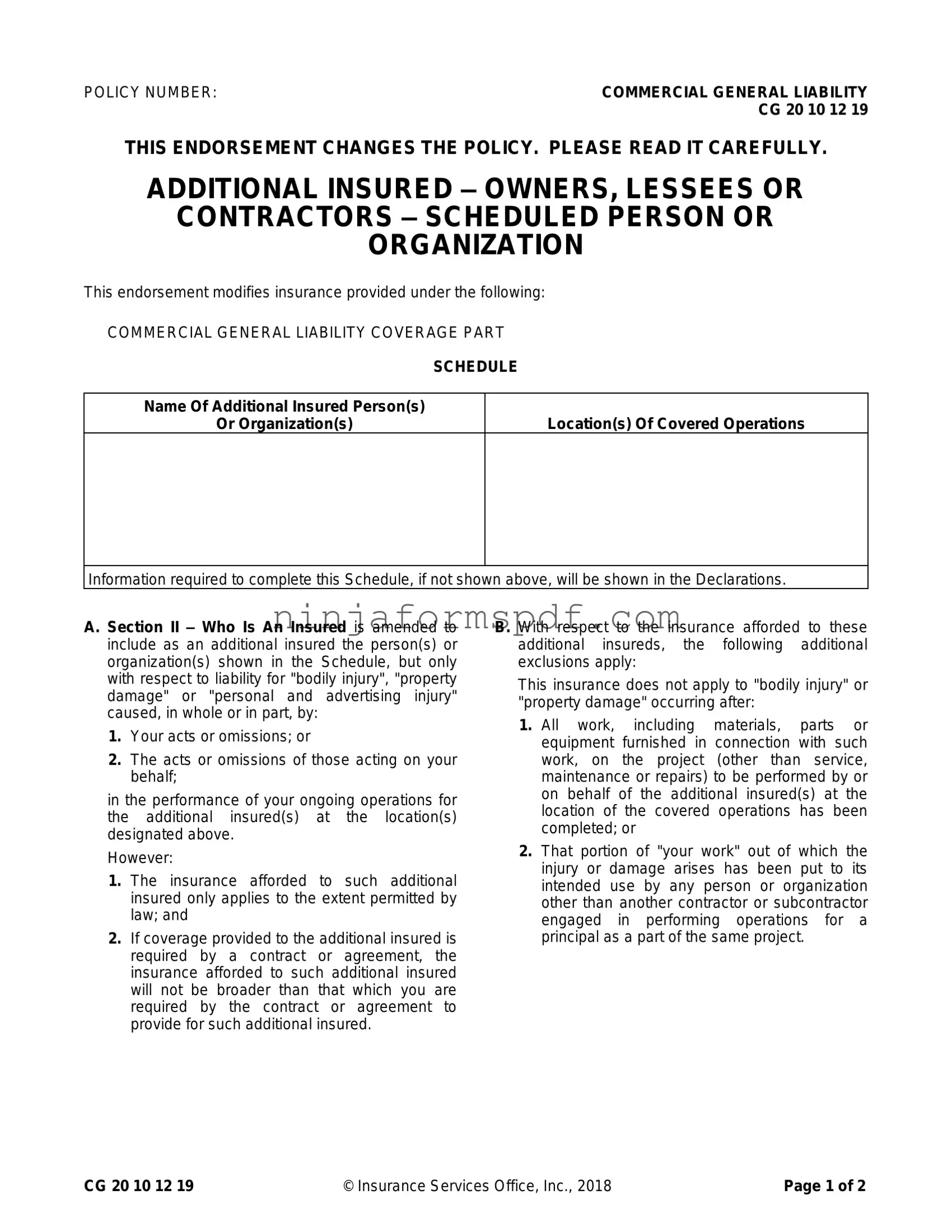Filling out the CG 20 10 07 04 Liability Endorsement form involves providing accurate details about additional insured entities under a commercial general liability policy. However, individuals often make mistakes that can lead to issues down the line. Understanding these common errors is the first step towards avoiding potential complications.
One of the most frequent mistakes is not specifying the full legal name of the additional insured. It is crucial to use the name as it appears in legal documents to ensure the correct entity is covered. Abbreviations or nicknames may lead to confusion and inadequate coverage.
An equally significant oversight is failing to accurately describe the location(s) of covered operations. This section must detail where the covered activities will occur, and any inaccuracies or omissions can result in disputes over whether a claim falls within the policy's scope. Precise descriptions set clear boundaries for coverage.
There's also a tendency to overlook the necessity of aligning the coverage with the requirements of a contract or agreement. When the form states that coverage for an additional insured will not exceed what is contractually mandated, neglecting to verify that the policy meets these stipulations can lead to insufficient protection for the additional insured.
Additionally, misunderstanding the limitations regarding the timeframe of coverage can be problematic. The form clearly indicates that coverage for additional insureds does not apply to damages or injuries occurring after the completion of work or after the completed work has been put to its intended use. Misinterpreting these temporal limits may lead to false assumptions about the duration of coverage.
Another error involves misreading the provisions that cap the amount payable on behalf of an additional insured to either the amount required by contract/agreement or the policy limit, whichever is lower. Ignoring these caps can result in unrealistic expectations about the policy's payout in the event of a claim.
Often, there is a lack of review regarding the additional exclusions applicable to additional insureds. Each policy may have unique exclusions that significantly affect the scope of coverage. Overlooking these can leave the additional insured unaware of the gaps in their protection.
The form's requirement that it does not increase the limits of insurance for the policy as a whole is another area of misunderstanding. This means that any claims paid on behalf of an additional insured count towards the policy's overall limits. Misapprehensions about how this affects the total available coverage can lead to unwanted surprises during claims.
A crucial but often neglected part of filling out this form is not ensuring consistent information across all related documents. Discrepancies between the form and other policy documents or contracts can lead to challenges in enforcing the terms of the coverage.
Finally, the failure to update the form when there are changes in the underlying contractual requirements or in the scope of the ongoing operations can result in outdated information that jeopardizes coverage. Regular reviews and updates are necessary to maintain the relevance and accuracy of the information provided.
By being attentive to these common pitfalls, those filling out the CG 20 10 07 04 form can better ensure that the coverage provided matches the needs and expectations of all parties involved. Careful completion of this form is instrumental in securing the intended liability protection for additional insureds.

